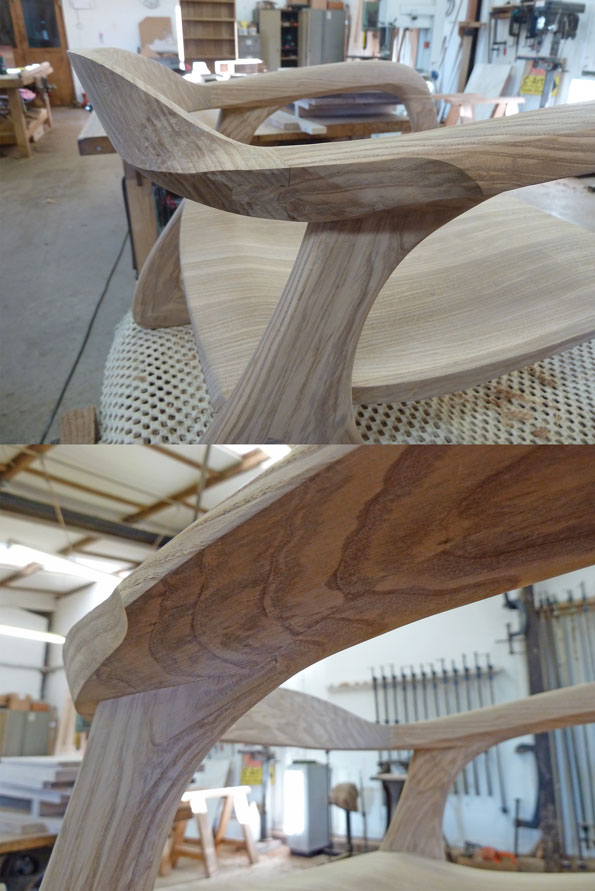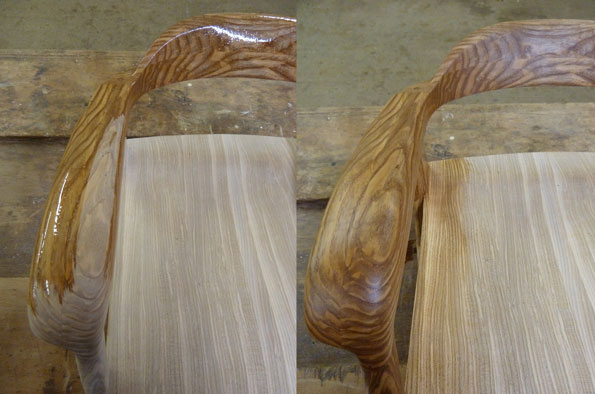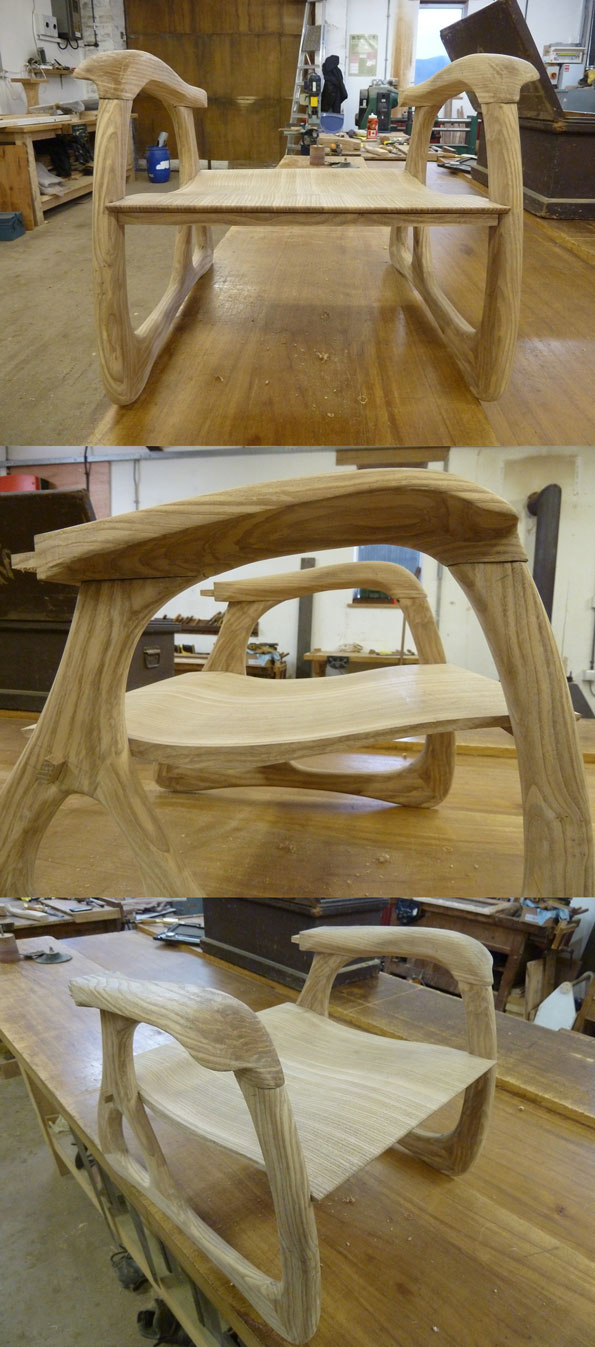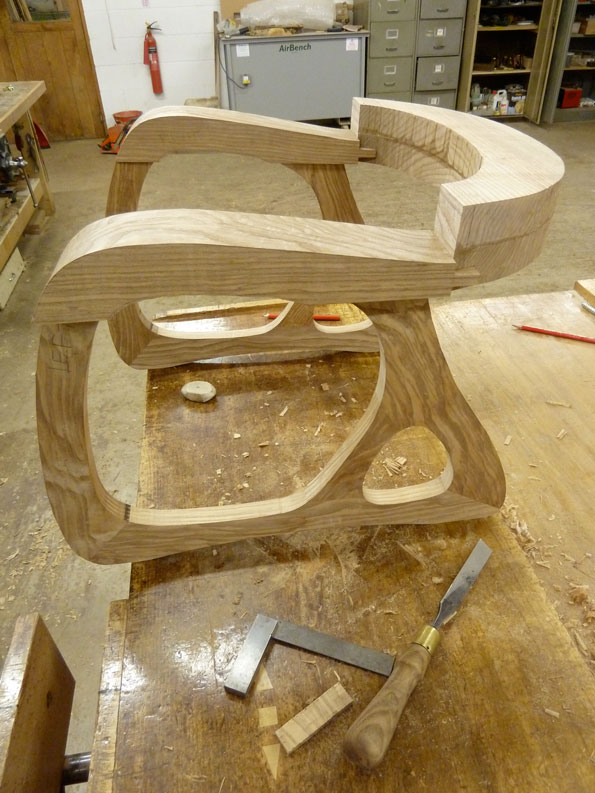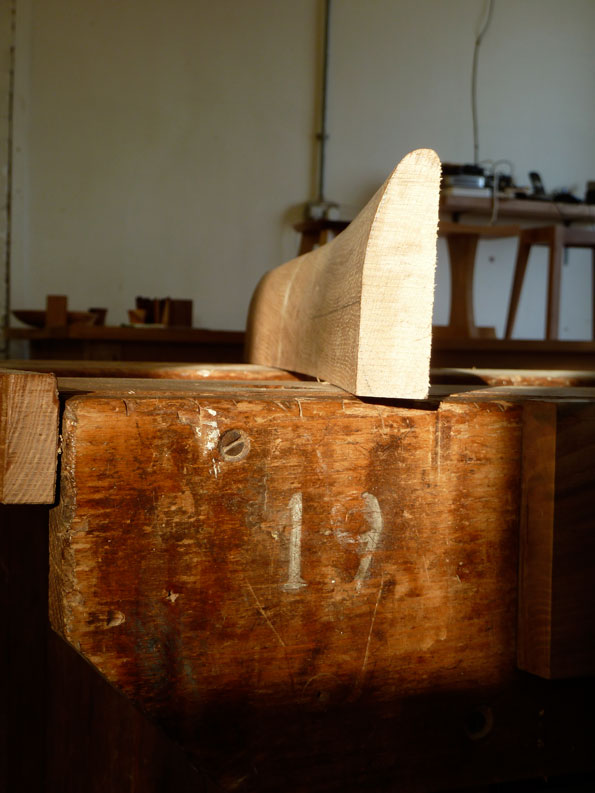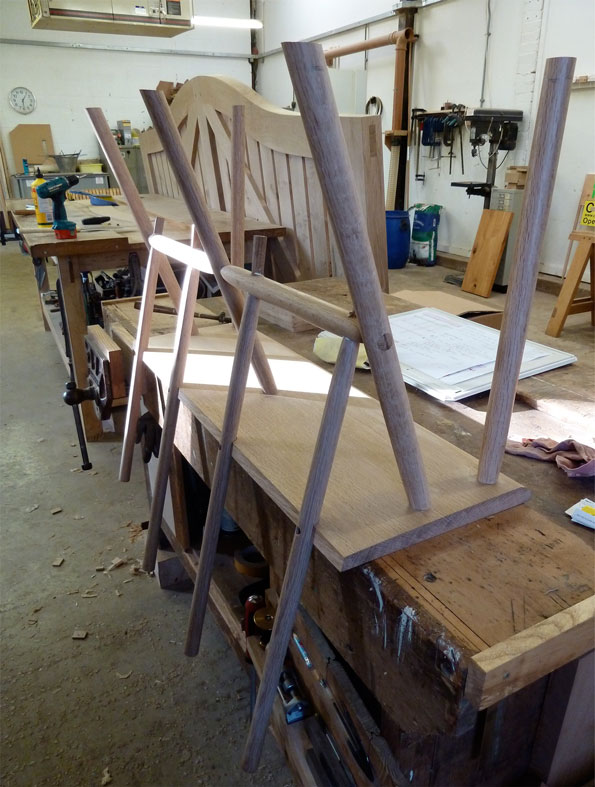And here's the story:
Not long ago, my client came to me with an idea. It had been recently announced that there will be a brand new member of his family arriving, and wanting to welcome the little tyke into this exciting world, came to me to create something special.
After a good think, some chats and brain storms, it was decided that, as much as a high chair or cot or wooden toy will be helpful, it just wasn't special enough. Nope, this baby needs something that will be exceptional and everlasting. A memento to her first few years.
Taking note from her Scandinavia roots, and wanting to add a wee salute to the design, craft and material ethos of the region, I designed a scaled down lounge chair. This design has unusual proportions for a child's chair, but I thought the low, reclined position would be ideal for those early stages of sitting. In the brief arms were a must, so falling off was avoided. From this starting point I decided to take this opportunity to create something tactile, sculptural, as well as developing a unique chair structure. A mini chair for a mini lady.
There was much discussion about the type of wood. Traditionally, furniture of the era I took inspiration from would use dark timber with hardly any grain markings. I guess as to not distract from the form. However, being a wannabe British Wood Ambassador, making a wooden chair by hand, from local timber it made sense to scrap that thinking and go with what Cumbria had to offer. About 20 miles away from the workshop, in Penrith, there was a pretty old Ash tree. I never saw it being milled, as that happened some 2 odd years ago, however I can tell it was a slow growing old tree by its extraordinary colouring and grain markings. Ash is usually pale in colour with high contrasting, uniformed grain. The boards Huw helped me pick out were distinctly dark with an almost tiger print pattern. It was stunning - Olive Ash it shall be!
I have to admit that I got a little carried away in the beginning. I had never used a spindle moulder before and the possibility to make multiple, delicate forms one after another, bing, bang bosh, was too exciting to skip. I bashed on with the seat form first; a flowing curved shape, laminated with biscuits. Here's the jig:

